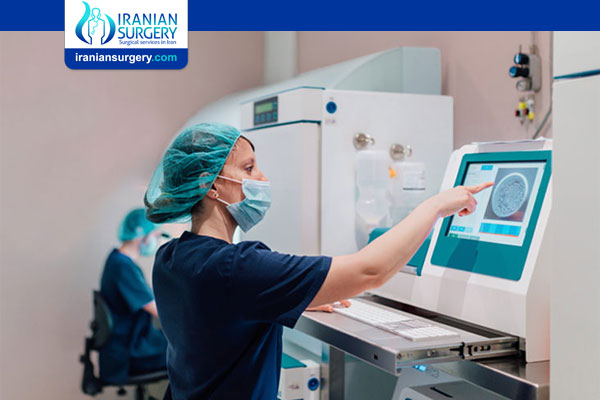What Grade Embryos Can Be Frozen
What Grade Embryos Can Be Frozen
In 1983, the first baby was born using Frozen and then thawed human embryos. Since then, freezing embryos is an integral part of IVF and Assistive Reproductive Technologies (ART). This technique has undergone a lot of advancements and now it is considered a safe technique for the long-term life of the child born out of Frozen Embryos.
What Is Embryo Freezing?
Embryo freezing (cryopreservation) involves storing viable embryos in sub-zero temperatures so that they can be used at a later date.
Why Would a Person Freeze Embryos?
Embryo Freezing is a boon for PCOS patients. Deferring the transfer of embryos to the next menstrual cycle not only increases your chances of IVF success but also minimizes the chances of OHSS (Ovarian Hyper Stimulation Syndrome).
. For a second child: Even if you are planning for a fresh transfer, the extra embryos of good quality (Grade A) can be frozen. They can be used later if you are planning for another baby or in case of IVF failure.
. Fertility Preservation: If you want to defer having a baby for a few years because of a career or any other reason, you should get your embryos or eggs frozen. When you are young and less than 30 years, your eggs are generally of good quality and quantity. As egg increases, freezing the embryos or eggs at a younger age minimizes the age-related complications of pregnancy. Also, the chances of losing all good eggs because of increased age are not there.
How Likely Are Frozen Embryos to Result in A Successful Pregnancy?
As with embryos obtained from a fresh cycle, the success of frozen embryos depends on the age of the woman at the time of retrieval, the stage and grade of the embryo, and the cause of infertility.
Embryos frozen at the blastocyst stage have the highest chance of resulting in a live birth. Cleavage stage embryos (pre-blastocyst) do not survive freezing as well as do blastocysts.
Stages Of the Embryo That Can Be Frozen
Embryos can be frozen at different stages of their development:
. Day 1 (Pronuclear Stage) when they are just a single cell.
. Day 2 or 3 at Two to Eight-cell Stage.
. Day 5 or 6 in their development i.e., the Blastocyst Stage.
Though embryos can be frozen at any stage of development, the majority of embryos are stored either at Day 2/Day 3 stage or at Blastocyst stage.
What Grade Embryos Can Be Frozen
Only excellent quality (i.e., Grade A) embryos are considered for freezing. Day 3 embryos should be preferably frozen at 6 to 8 cell stage. Blastocyst embryos can be frozen as well with good recovery rates. If you are planning for PGD/PGS, your Blastocysts are frozen after taking a small sample of the embryos. The sample is then sent for genetic testing.
Can/Should All of My Excess Embryos Be Frozen?
This answer to this question is a matter of debate for doctors, patients and ethicists. Some IVF centers will only freeze an embryo if it is a good quality blastocyst. The rationale behind this practice is that lower stage and grade embryos have such low success rates that freezing anything but the higher quality blastocysts give the patients:
. False hope
. Additional expense without substantial chances of conceiving
. Additional time lost for attempting another fresh cycle, which has a higher chance of pregnancy
This practice also reduces the number of embryos abandoned by couples that never return to collect them. The centers that have adopted this position have seen a dramatic rise in their success rates for frozen embryo transfers. There is wide variation in pregnancy rates after frozen cycles, with most centers reporting approximately 40-45 percent success rates after a frozen cycle using blastocyst embryos.
This represents an improvement over the 10-20 percent chance of success with most day-three frozen embryos. Other physicians argue against this position on several levels:
. False hope is relative
. Even though the success rate of lower stage and grade embryos is lower, every embryo deserves a chance to succeed
. Not all normal embryos will progress to the blastocyst stage
. Due to cost or loss of ovarian function, some patients may never be able to perform another fresh cycle; cryopreserving more embryos gives patients more opportunities to achieve pregnancy
It is clear that this is an issue with some complexity. Even in the same medical practice, different providers may have opposing points of view. At Iranian Surgery, while we would prefer to freeze only high-quality embryos on day five, we must abide by our patients’ wishes and grant them the freedom to make an informed decision that best matches their physical health and ethical, moral, financial and emotional framework.
For these reasons, patients should give the issue of embryo freezing thoughtful consideration before the IVF cycle begins. Please bear in mind that no matter the outcome of the initial cycle, you will ultimately need to make a decision about how to use any excess embryos.
About Iranian Surgery
Iranian surgery is an online medical tourism platform where you can find the best doctors and fertility specialists in Iran. The price of IVF in Iran can vary according to each individual’s case and will be determined by an in-person assessment with the doctor.
For more information about the cost of IVF in Iran and to schedule an appointment in advance, you can contact Iranian Surgery consultants via WhatsApp number 0098 901 929 0946. This service is completely free.
Source:
https://trmbaby.com/library/ivf/embryo-freezing/ https://www.gunjanivfworld.com/blogs/can-embryos-be-frozen


